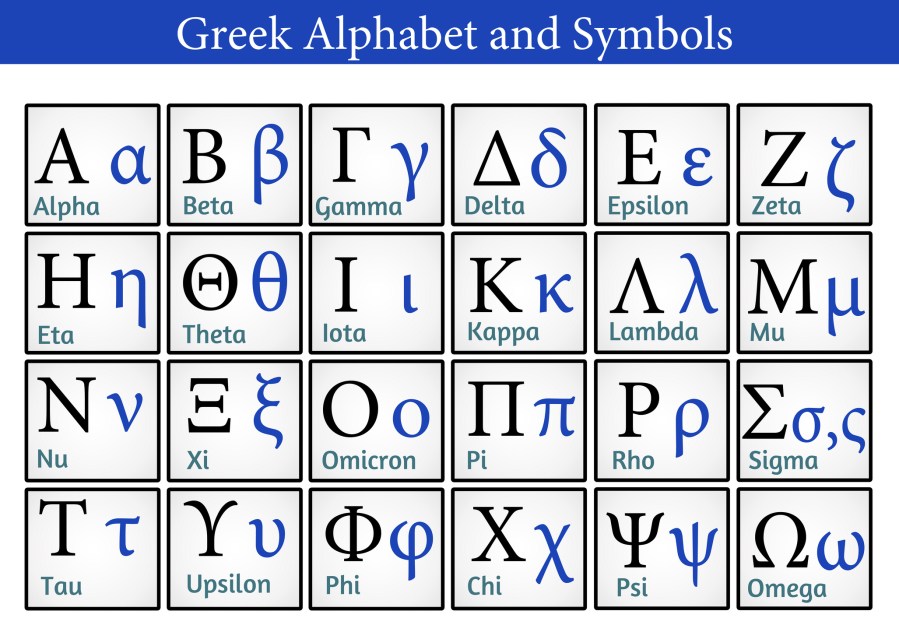There are several COVID-19 variants you haven’t heard of
Testing on staging11
(NewsNation Now) — News of the emerging omicron variant from southern Africa has sent markets falling and governments scrambling to cut off travel. Scientists, including Dr. Anthony Fauci, say omicron has as many as 30 mutations on its spike protein, which could affect how well immunity will hold up to it.
Yet, if you know your Greek alphabet, you may be thinking, “I haven’t heard one iota about the kappa variant, or the xi variant, or about eight other variants that have come since delta.”
While not every one of the thousands of COVID-19 variants gets a Greek letter, the list of them has piled up to omicron, the 15th symbol on the Greek alphabet. Alpha, beta, gamma delta and omicron are all currently labeled as “variants of concern,” the highest alert level from the World Health Organization. There are two other ranking stages underneath that one: “variants of interest” and “variants under monitoring.”
Here is what we know about the other variants with Greek letters, and why you probably don’t know much about them.

Epsilon Variant
The epsilon variant is the first strain that originated in the U.S. to get a “variant of interest” stamp from the WHO. It was first detected in California, and in January 2021 it accounted for nearly one-third of cases in a statewide study. It’s unclear if the variant caused more severe disease, though there were scattered reports that it was causing reinfection in some patients.
But it may have run into a delta wall. Even though it was detected outside the state, it never took off internationally. The World Health Organization is no longer monitoring it as of July 6.
Zeta Variant
This variant did cause some alarm when it was first discovered as the fuel behind Brazil’s outbreak in April 2020. It was then known as the P.2 variant. It was classified a variant of interest on March 17, but was demoted off the WHO’s monitored list on Aug. 17.
Eta Variant
Similar to zeta, the eta variant never made it to WHO’s variant of concern list. It has been reported in at least two dozen countries, but never blamed for any outbreak. Still, as of Sept. 20, the WHO continues to list it as a variant under monitoring.
Iota Variant
Another American-made variant, iota was thought to be partially behind the surge of COVID-19 in New York in the winter of 2020-2021. In a preprint study that has not been peer reviewed, researchers found this variant “substantially increased the infection-fatality risk (IFR) among adults 65 or older by >60% during Nov 2020-Apr 2021, compared to baseline risk estimated for preexisting variants.”
Iota was only listed as a variant of interest, and was demoted to WHO’s variant under monitoring list on Sept. 20.
Kappa Variant
Like the delta variant, kappa was first detected in India. By the end of May 2021, barely six months after it was found, it had spread to 41 countries. The WHO labeled it a variant of interest in April, but shifted it down to a variant under monitoring in September. An Oxford study found AstraZeneca and Pfizer’s vaccines were effective against it, and Moderna announced a small study found its vaccine was also effective against it.
lambda variant
Lambda is one of only two variants the WHO still lists as a variant of interest. It was first discovered in Peru in December 2020, and by August of this year was prompting fears it could evade immune protection from vaccines or natural infection.
But, as with many of the variants on this list, it likely hit an evolutionary wall as the delta variant spread globally and claimed the vulnerable population for itself.
The lambda variant’s ability to escape vaccine protection was never confirmed beyond initial papers, and the disease symptoms have not proven worse than other variants.
Mu variant
Mu was the last variant to get a Greek letter before omicron. Often mentioned in the same breath as lambda, mu is the other variant the WHO is still labeling a variant of interest.
Indeed, you may remember mu made headlines in early September as the country was grappling with the third pandemic wave. Headlines called it a doomsday variant that could leave delta in its wake. Nearly three months later, that hasn’t happened.
The alarm was raised because it had been steadily increasing its presence in the U.S. over the summer, but, according to WebMD, it took a nosedive as delta took off.
After being discovered in Colombia in January, mu was designated a variant of interest on Aug. 30, which remains its current designation.
Nu and Xi Variants
Greek alphabet experts are no doubt wondering why this list stops two letters short of omicron. That’s because the WHO skipped over them and went straight to the 15th letter. The spelling of the letters provides the explanation.
The letter nu is pronounced nee, which could lead to confusion as people read it spelled one way but hear it spoken another. Even if it were pronounced as it is spelled, a WHO spokesperson told NewsNation it sounds too similar to the word “new” and could be confusing.
Meanwhile, xi is a common name, including China’s president, Xi Jinping.
“WHO best practices for naming diseases suggest avoiding ‘causing offense to any cultural, social, national, regional, professional or ethnic groups,'” the WHO spokesperson said in an email to NewsNation.
